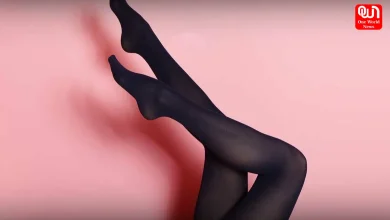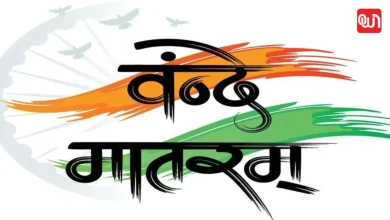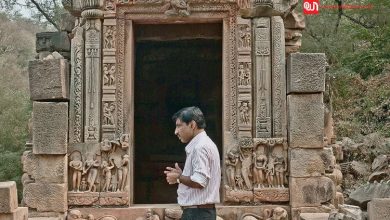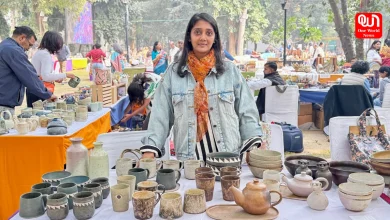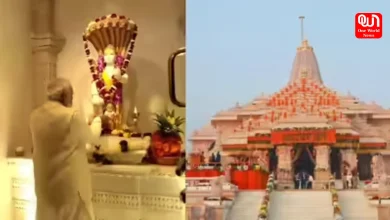Happy Birthday to Saheed Bhagat Singh ji…!
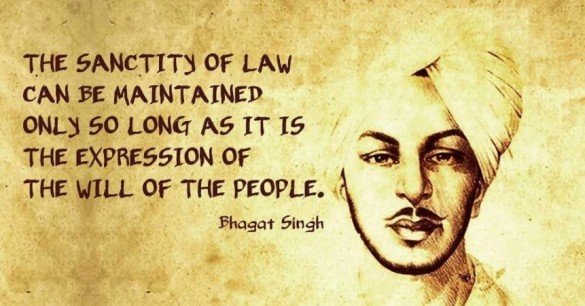
Martyr Bhagat Singh has a very brief period of active political life. In this brief time span he has transcended to the top of a thought process which make him ever relevant to the immerging situations. As these years there is increased interest in him by the common man so there is an urge to have more thorough understanding.
The short period of active life also creates a paradox. In absence of thorough understanding of the process of his revolutionary growth, the scope for interpretation of shahid for narrow benefit has been on rise. Thus there is an urgent need to have better understanding of the growth of thought process.
First hand experience of events
That explains, how at the age of twelve, he goes to Jallianwala Bagh Amritsar, on his own at learning of the mass massacre by General Dyer. On this firsthand experience he comes alive with a question about the naked brutality of the colonial ruler. This was 1919. He also finds that every where marshal law is implemented and suppression is to the extent that first world war air force airplanes were used to bomb Gujrat city in Punjab.
Following this he visits Gurdwara Nankana Sahib in March 1921 following the brutal killings of 139 peaceful Sikhs by Mahant ,the Sarbrah of gurdwara and his mercenaries. Mahant acted under the protectorate of British Deputy Commissioner. This raised further questions in his young mind as to how British colonial rulers not only are brutal by them self but they also used Indian vested interests to do atrocity on Indian too.
This is the period when post Tilak, Gandhi was immerging as a mass leader and in early 1920 he brought “two elements to the anti-imperial struggle that had been missing since the Sepoy Mutiny. His political skills, plans, and charisma drew a mass base into the first all-India struggles since 1857, and the struggles themselves connected popular grievances against aspects of British rule to the final goal of ending British rule.… Gandhi’s success made him into the Congress Party’s preeminent–and indispensible–leader.1”
Call of Gandhi in 1921
His advised the students that “I consider it sinful to take education where his (british) flag flies. I consider it sinful to study even the Gita and the crafts there. To tell you the truth I do not wish even to live under such a regime. If it were possible to renounce it altogether I would have done so…….I consider this the regime of Ravana. Tulsidas has called it a sin to live under such a regime. I can positively say that all the twenty-four hours I am taken up with the idea of destroying it or mending it…. You must do what it is possible for you to do. The main thing for you is to refuse the education that is offered to you. . I do not speak of co-operation in general. I ask you to give up the specific co-operation with which you as students are concerned. If you feel the same way about this Government as I do, then you should consider it your dharma to leave. This dharma involves no conditions as to the kind of education you may then get. I merely tell you your dharma.”2
Mahatma Gandhi in 1920 further gave clear call that “To everyone I say: whether no education is available elsewhere, you should leave. You can try for a similar sort of education elsewhere if you are so inclined but it should not be under the aegis of the Government. I want to say that it is not a question of livelihood; it is a question of humanity. The question of livelihood may come next. Freedom is dharma. …. For I consider it a sin to take education under the aegis of a regime which I consider rakshasiand which has committed such outrages in the Punjab.” 3
1. Meneejeh Moradian and David Whitehouse, “Gandhi and the Politics of Nonviolence” International Socialist Review Issue 14, October-November 2000
2. THE COLLECTED WORKS OF MAHATMA GANDHI VOL. 22 : 15 NOVEMBER, 1920 – 5 APRIL, 1921 p23
3. Ibid vol22 page 23
This call was very enthusing to the sensitive youth like Bhagat Singh, Chander Shekhar Azad and others. He and many of his later revolutionary colleagues left the education and joined the non cooperation movement on the call of Gandhi.
Bhagat Singh was keeping a close eye on activities of unions in preparations for Hartals. This is clear from his remarks in a letter to Grandfather dated 14 Nov,1921. He, writes “these days railway persons are preparing for hartal. It is possible that it may start in a weeks time”4 This shows that he had got himself involved in the activities of non- coperation and it was being done with the knowledge of his family. The call for non cooperation was very attractive for a 14 year old young man as it was the answer to the brutality of British colonial rule. Particularly Mahatma Gandhi’s further assurance that he will get the “Swaraj in one year” raised confidence of these young minds.
The situation of peasantry was precarious. This is well documented as follows. “The exploitation of and the tyranny practised against the Oudh peasantry by the rapacious landlords and their minions are a known reality in the annals of peasant history. After the Mutiny of 1857, the British created and buttressed a small class of taluqdars in Oudh to help them in their colonial domination of this part of India. These feudal barons and their ‘kinsmen’ led luxurious., westernised lives, and the burden of their high living fell on the poor peasantry. They heaped numerous indignities on the peasantry to realise their extortionate demands. Nazarana (gift payments), bedhakli (eviction), rasad (compulsory supplies) and begar (forced labour) were not the only weapons in their hands.”5 They would also impose cesses like Hathiana Moturana6 and so on to meet their extravagance. The taluqdars wielded the sword of eviction to pressurize the tenantry into paying higher cesses, as owing to increases in population there was a growing demand for more and more holdings. Nazarana had become such an evil that some peasants were painfully forced to commit the most heinous sin of kanya vikraya (sale of daughters) to raise nazarana money.7 Forced labour on a wage ranging between two to eight paise per day was a common practice. Even these wages were generally not paid.8 Further, the peasantry had to provide rasad and begar to the touring government officials, failing which they were exposed to the wrath of their landlords.9
Under such conditions the call of noncooperation and boycott came as a ray of hope. It enthused and emboldened the masses to get liberated of their miseries. They saw a new dawn of freedom which will provide them relief from suppression, exploitation as well as brutality of colonial rule.
Thus Nagpur Session of the Congress (December 1920) endorsed the non cooperation and boycott of foreign cloth. Congress membership was thrown open to all adult men and women on payment of 4 annas as subscription. The adoption of the Non- Cooperation resolution by the Congress gave it a new energy and from January 1921, it began to register considerable success all over India. 9,000 students left schools and colleges. The boycott of law courts by lawyers was not as successful as the educational boycott. But many prominent people did leave their lucrative practice to join national movement. By December, over 30,000 people were arrested from all over India .
4. Jagmohan Singh “ Shahid Bhagat Singh ate Unahn De Sathian dian Likhtan” Chetna Parkashan Ludhiana 2005 p 27
5. S K MITTAL KAPIL KUMAR ,”Baba Ram Chandra and Peasant Upsurge in Oudh: 1920-21” Social Scientist. v 6, no. 71 (June 1978) p. 35
6 Hathiana was imposed as a cess on the peasantry if the taluqdar had to purchase an elephant and if a car was to be purchased Moturana tax was levied on the peasantry.
7 Mehta Report No 753/1920, Revenue, U P State Archives (hereafter UPSA,) p 11.
8 Independent, September 24, 1920.
9. . S K MITTAL KAPIL KUMAR ,”Baba Ram Chandra and Peasant Upsurge in Oudh: 1920-21” Social Scientist. v 6, no. 71 (June 1978) p. 36
Withdrawal of Non Coperation movement – Looking to Irish success
Then came the unfortunate event of Chauri Chaura where six unarmed non cooperators were killed in indiscriminate police firing. The emboldened non cooperators chased the armed police men and the Thana where they went into hiding was put to torch. This caused death of twenty two police men. This gave cause to Mahatma Gandhi for calling an end to the Non-Cooperation Movement on 12 February 1922 without consultation with other leaders of congress. So The Swaraj was not attained in a year as promised. This caused great despair to the enthused youth including Bhagat Singh.
The same British empire had to come on terms with Irish nation which was much smaller than India. Anglo-Irish Treaty was signed on December 6, 1921 and Ireland Free State was created by partitioning and creating Northern Ireland controlled by British Government.
In 1923 when Bhagat Singh had to leave home and come to Kanpur ,following insistence of family to get married. He found that some youth under the leadership of Sh. Sachider Nath Sanyal was getting themselves organized under the banner of Hindustan Republican Association on the line of Ireland. Here he had the advantage of working with Sh Ganesh Shankar Vidyarthi a great patriot, a great journalist and a dedicated social and political worker. Though at National college Lahore he had started studying revolutionary literature. He had a very close friend in Sukhdev who was discussion partner to all readings. But at Kanpur also he found such a partner in Sh B K Dutt.
The question which bothered the young minds was how could Ireland a tiny Island can gain status of Free Republic from British ? While India with all the efforts and sacrifices of Gadar Party in 1915 -16 and current mass enthusiasm, fearlessness and strength could not achive any significant victory.
In 1924 a book describing firsthand experience of Ireland freedom struggle was published entitled “My Fight for Irish Freedom” by DAN BREEN one of the fierce and daring freedom fighter. This was the book which was thoroughly studied by Bhagat Singh and his compatriots. Bhagat Singh translated this and got it published in Hindi and wanted it read broadly.10
The first lesson drawn was that Ban Bareen and his comrades were guerilla war farers and hence some form of guerilla tactics can force the British to surrender dominion status. The articles explaining guerilla tactics were also published in those days for educating youngmen.11 Prabha was the sister literary magazine published by Sh Ganesh Shankar Vidyarthi the editor and publisher of Partap.
The Hindustan Republican Association leaders Shahid Ram Parsad Bismal , Shahid Ashfaq Ullah Khan and Chander Shekhar Azad belonged to that tradition. The manifesto and constitution of HRA declared that object to “establish a Federated Republic of United States of India by an organized and armed revolution.” 12 Similarily Hindustan Republican Army wing was created on the lines of Irish Republican Army.
Bhagat Singh while analyzing his own development of ideas wrote that “up to that period I was only romantic idealist revolutionary. Upto then we were to follow.”13
10.Jagmohan Singh “Shahid Bhagat Singh ate Unahn De Sathian dian Likhtan” Chetna Parkashan Ludhiana 2005 p 163
11. Agiat ( a pen name), “Gurilla Yudh” Prabha, Kanpur 1924
12. Malwinder jit Singh & Harish Jain Editors “ The Hanging of Bhagat Singh Confession ,statements and other Documents” Unistar 2007 p351
13 Bhagat Singh / Why I Am An Atheist/NBT/2006 page 23
By the end of 1925 after Kakori train holdup all the leaders except Chander Shekhar Azad were arrested . Bhagat Singh attended the court proceeding as a journalist with identity card from “Akali” being published from Amritsar14
Revisit to Irish Experience
He found to his surprise that the commoners gave witnesses without any concern for the persons who were ready to sacrifice themselves for their betterment. This apathy of their own fellows made Bhagat Singh revisit the Dan Breen’s autobiography which he has translated . Bhagat Singh assessed Shahid Ram Parsad Bismal’s capability to be “a general of Army had he been born in some other country at some different time.”15
Bhagat Singh laments on the apathy of public about Babar Akali Martyrs . In an article published in Partap on 15 March 1926 he wrote that ”we coward animals have not dared to come out of our luxurious life to have a sigh on their martyrdom.”16
On his revisit to the autobiography of Dan Breen he found that the freedom fighters in ireland are fully embedded with the masses. He warned that “Ireland parallel does not apply in India’s case . In Ireland it was not sporadic terroristic activities she witnessed but it was a nation wide rising, the rank and file were bound by an intimate knowledge and sympathy with the gunmen. Arms they could have very easily ,and the American- Irish poured out their money.” 17
In another very important development ,Bhagat Singh’s father took him to Belgaon Congress session held on 25th Dec to 30th Dec 1924. Bhagat Singh’s Father was naturally worried on escaping of Bhagat Singh aged 16 year from home. He wanted him to fully participate in the Indian freedom struggle but on a mature and long term basis. He took him to Belgaon Congress which was to be presided over by Mahatma Gandhi after his jail term. He wanted his son to appreciate that for a leading role one has to develop some characteristics and capabilities. Education is the most important. He introduced to him Subash Bose, Pt. Nehru . It was to emphasize that to be in leading role Subash Bose had studied in England got selected for Indian Civil Services resigned and choose to play lead role in national movement.
Similarily, it is after good study in England that Pt. Nehru plays a leading role. Bhagat Singh was also introduced to old revolutionary from Bengal Anushelan Samiti Sh. Nirlamba Swami. He was one who introduced Sardar Kishan Singh and Ajit Singh to bengal revolutionaries in 1903. Bhagat Singh had a long talk with Sh. Nirlamba Swami. This is referred to in his autobiographical note he writes that ‘”I came across a book entitled Common Sense by NIrlamba Swami. It was only mystic atheism “18 But out of this meeting Sh Nirlamba Swami showed his satisfaction and approval of Bhagat Singh’s activities. But the idea, that study is most important activity to transform oneself was sown.
He laments, in a letter to his friend Amar chand in 1927 that, “Brother my desire to study in foreign has been lost. But if you get chance do send some good books”19
14. Jitendranath Sanyal “Amar Shaheed Sardar Bhagat Singh” NBT 2006; p. 27
15..Jagmohan Singh Ed. “ Shahid Bhagat Singh ate Unahn De Sathian dian Likhtan” Chetna Parkashan Ludhiana 2005 p 58
16. ibid ; p 39
17. Bhagat singh, “To the young political workers” 2 feb , 1931 : www.shahidbhagatsingh.org/documents
18 Bhagat Singh / Why I Am An Atheist/NBT/2006 page 26
19. Jagmohan Singh ed. “ Shahid Bhagat Singh ate Unahn De Sathian dian Likhtan” Chetna Parkashan Ludhiana 2005 p 73
The dilemma, in which Bhagat Singh finds himself in the year 1926, is best stated in his own words that then ”came the time to shoulder the whole responsibility. Due to the inevitable reaction, for some time, the very existence of the Party seemed impossible. Enthusiastic comrades – nay leaders – began to jeer at us. For some time I was afraid that someday I also might be convinced of the futility of our own programme.” 20
This was the time when the attempts to get senior leaders escape from police custody had failed. The hope of having someone to lead was shattered. But this also provided opportunity for researching the process of revolutionary work.
During this time a debate between revolutionary Sachinder Nath Sanyal and Mahatma Gandhi also took placed. It started with Mahatma Gandhi’s condemnation of revolutionaries in his presidential speech at Balgaum congress on 26th Dec,1924. Bhagat Singh was keenly following the proceedings as a correspondent of Akali a Punjabi paper being published from Amritsar.21 Gandhi ji tried to conclude the debate by pointing to the “three great hindrances to swaraj”22 Besides fuller participation of masses including young men and women the need to address was to “the discord between Hindus and Mussalmans and the inhuman ban upon the suppressed classes”23
Bhagat Singh agreed with the hindrances pointed out. Already by the end of 1924, the discussions between him and his friends were on “ to put the lessons of revolutionary history being taught”24 at National College Lahore to practice. The discussion was also being held on “the role of youngmen in the future struggle for independence.”25
This was also the time for Bhagat Singh to have “a turning point in his revolutionary career. Study was the cry that reverberated in the corridors of (his) mind. Study to enable oneself to face the arguments advanced by opposition. Study to arm oneself with arguments in favour of one’s cult.“26 This brought a “remarkable modifications in his faith and convictions. The romance of the violent methods alone which was so prominent amongst his predecessors was replaced by serious ideas. No more mysticism, no more blind faith. Realism became their cult. Use of force justifiable when resorted to as a matter of terrible necessity: Non – violence as policy indispencible for all mass movements. So much about methods. The most important thing was the clear conception of the ideal for which we were to fight.”27 This was the period from 1925 onward. He got ample time to study ideals of world revolution. He studied “ the men who had successfully carried out revolution in their countries.”28
20 . Bhagat Singh / Why I Am An Atheist/NBT/2006 page 28
21. THE COLLECTED WORKS OF MAHATMA GANDHI VOL. 29 : 26 DECEMBER, 1924 page 489
22. . THE COLLECTED WORKS OF MAHATMA GANDHI VOL. 30 : 12 Feb 1925 page 243
23. Ibid
24. Comrade Ram Chander ,” History of Naujawan Bharat Sabha and H S R A” published by author 1978 p xiii.
25. ibid
26 Bhagat Singh / Why I Am An Atheist/NBT/2006
27 ibid
28 ibid
The Naujawan Bharat Sabha was founded in 1925 as per Comrade Ram Chander founder president. Bhagat Singh being the founder secretary. After Gandhi’s arrest in 1922 and his release in 1924 , the menace of Hindu Muslim riots has spread so much as to involve even villages too. Hence the issue of communalism as well as was addressed to be fought out of members mind. The solution offered was so practical that it raised a powerful youth group. Thus it did address the concerns declared by Mahatma Gandhi but with a revolutionary understanding.The manifesto of sabha declared that” Religious superstitions and bigotry are a great hindrance in our progress. They have proved an obstacle in our way and we must do away with them.
“The thing that cannot bear free thought must perish.” There are many other such weakness which we are to overcome. The conservativeness and orthodoxy of the Hindus, extra-territorialism and fanaticism of the Mohammedans and narrow-mindedness of all the communities in general are always exploited by the foreign enemy. Young men with revolutionary zeal from all communities are required for the task.” It further declared that “Our real battle is against our own disabilities which are exploited by the enemy and some of our own people for their selfish motives.”
Sabha also declared socialism as its objective. It declared that sabha is to work for “Revolution by the masses and for the masses.” In other words, Swaraj for the 90%; Swaraj not only attained by the masses but also for the masses.”29 This is an example creative revolutionary work of Bhagat Singh and his colleagues where scientific understanding was applied to the reality and a dynamic social force was generated. The history and achievement of members of sabha proves it beyond doubt.
Bhagat Singh’s record of vast study as to subjects, authors and literature and that too from various cultures made him a true revolutionary. His definition of the revolution was “complete overthrow of the existing social order and its replacement by socialist order. The masses have to be “educated to create a favorable atmosphere for the social programme. The struggles are best to train and educate. 30”
As seen earlier the movement was influenced by the Irish achievement so Bhagat Singh continued his reassessment of the past position and analyzed the later developments of Ireland as a revolutionary in following words.”Ireland had to be satisfied with an unaccomplished movement. It has lessened the bonds of but not released the Irish proletariat from the shackles of the Capitalist, native and foreign. Ireland is a lesson to India and a warning – warning how nationalistic idealism devoid of Revolutionary social basis although with all other circumstances in its favour may lose itself in the shoals of a compromise with Imperialism. “Thus overcome the attraction of Ireland as was it in the beginning. He questioned,”Should India, if she could imitate Ireland still?” 31
Bhagat Singh as a revolutionary not only announced that “when he is convinced of a scientific principle, he lives it. “ He understood the basic scientific principles and applied these to the realities around and was thus able to effect the direction and outcome of the events qualitatively. As proclaimed by him that revolution is a social change and for that is only possible by a “Scientific, dynamic, social force“. We can see that his transcendence to a revolutionary was complete. Humanism is basic motive force of a revolutionary. All his actions are motivated by his deep concern for the weakest person in the society and it is with his benefit in view.
29. Manifesto of Naujawan Bharat Sabha , 6 April,1928 : www.shahidbhagatsingh.org
30.S irfan Habib “ To Make the Deaf Hear” Three Essays Collective 2007
31. Bhagat singh, “To the young political workers” 2 feb , 1931 : www.shahidbhagatsingh.org/documents
The various actions by Bhagat Singh need a further detailed analysis from the angle that those were attack focused on the “institutions” .
On deeper analysis one will find that all the four major actions of Bhagat Singh were direct attack on the institutional arms of British colonial rule viz : “satanic arm” the police , central Assembly which was used to sustain a fake hope of achieving freedom, the jail system which was most dehumanized and was used to demoralize and the Justice system which was used to perpetuate Imperial designs. The end effect is that the British Imperialism’s hold was shaken. The sprit kindled by him continued simmering.
The colonial C I D in 1936 said that Bhagat Singh’s thesis called letter to political workers is the active force for all the leftist movements active against British Imperialism. It is his revolutionary legacy which perpetuates the hope of Indian masses for better future of Indian masses.
Bhagat Singh also wrote that all the activities of Hindustan Socialist Republican Association “ were directed towards an aim i.e identifying ourselves with the great national movement as its military wing.”32 This statement is very significant and if further analyzed and understood in the context of contemporary activities of national movement his along with HSRA’s revolutionary contribution to Freedom movement can be better appreciated.
Conclusion:
Here a brief background of Bhagat Singh is discussed in an attempt to understand the various influences and their effect on the decisions taken in the earlier phase when he describe himself as romantic revolutionary. Further it is explored that in that period what method he chose to transcend to become a true revolutionary.

